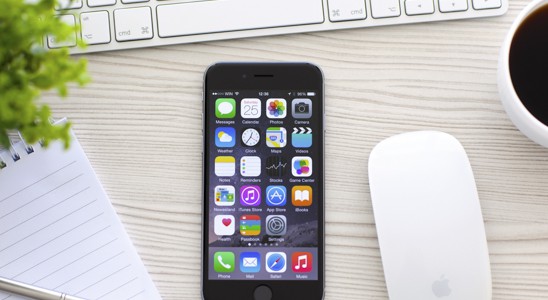Have you been using your iPhone a lot and, coincidentally, feeling pretty tired? You may even be feeling strain around your temples that you think is stress?
A lot has been written about the impact of television, computer, and phone screens on your sleep patterns when you view them in the last hour or two before you sleep. Studies have provided fairly compelling evidence that your natural biorhythms are disrupted, your sleep is less restful, and your performance the next day is impaired.
However, there has been less discussion about the effects of reading constantly from your smartphone, and glancing back and forth. Over the years, there has been a fair bit of research about Computer Vision Syndrome, and we all know that it is beneficial to look away from the screen every 20 minutes or so, or better yet actually get up and take a walk at least once an hour.
Your smartphone takes eye strain to a completely new level.

The typical smartphone user holds their phone about 8 inches from their face while reading. That feels like a fairly natural position given the size of the type that you’re reading, and the way your arm naturally rests. But inside your eyes, your lens has to work pretty hard to focus on something so close. And then when you look away, even just to look at your computer screen, or to look at something across the room, the lens of your eye has to make major adjustments to refocus at the greater distance.
Quite literally, using your smartphone is making your eyes work hard — and as they do, the physical movement of your eye and it’s muscles is causing strain around your temples. The longer you do it, the more strain you’re feeling — and that’s pretty much identical to the tension you feel when you’re under emotional and psychological stress as well.
As anyone who uses their smartphone for frequent messaging can attest, you also tend to strain your neck as you hold your head at an uncomfortable angle, looking down for extended periods of time towards the tiny screen just a few inches from your face.
Is There A Solution?
Short of just not using a smartphone, which doesn’t seem very likely for most people these days, there are a few simple things you can do which will help:
- Try to hold the phone a bit further away from your face — researchers recommend at least 12–18 inches is much better for you, as your eyes are focussing a little further away, but frequently people hold their phone as close as 7 or 8 inches.
- Increase your phone’s font size — particularly if you’re holding your phone further from your face, you don’t want to introduce another stress by straining to read text that’s too small. And if you’re over 40 years old, your lenses are already starting to get a bit stiffer and work harder to make all these focal adjustments.
- Blink. For any concentrated viewing, whether phone, computer, or television, we tend to focus more intently and blink less. As a result, our eyes get drier and that can lead to tired and stinging eyes. Try to blink a bit more often.
- Look away. Whilst smartphone use is habit-forming, and we tend to spend a lot of time reading numerous types of content, at the very least it helps to put the phone down and do something else for a few minutes! Allowing our eyes to focus further into the distance, our brains to take in other stimuli, and our necks to rest for a few minutes, all contributes to less stress and strain.
- Dim the screen. Particularly if you’re reading your smartphone at night time, the general advice has been that viewing an illuminated screen immediately before sleep will affect the quality of your sleep, not to mention making your eyes tired. However, research has confirmed that dimming the screen of your smartphone does alleviate (to some extent) this concern.
- Break the habit(s)! Research has demonstrated that we’re becoming a generation of ‘checkers’. Even when we’re not actively digesting specific information, research has confirmed what we already know — that people get into the habit of unlocking their screen and looking for messages, emails, tweets, and a multitude of other content. Whilst the instant accessibility of so much information can be a blessing, the constant distraction from other activities (and people!) can take it’s toll — in terms of physical and mental stress and tiredness, distractibility, and inefficient thought processes.
